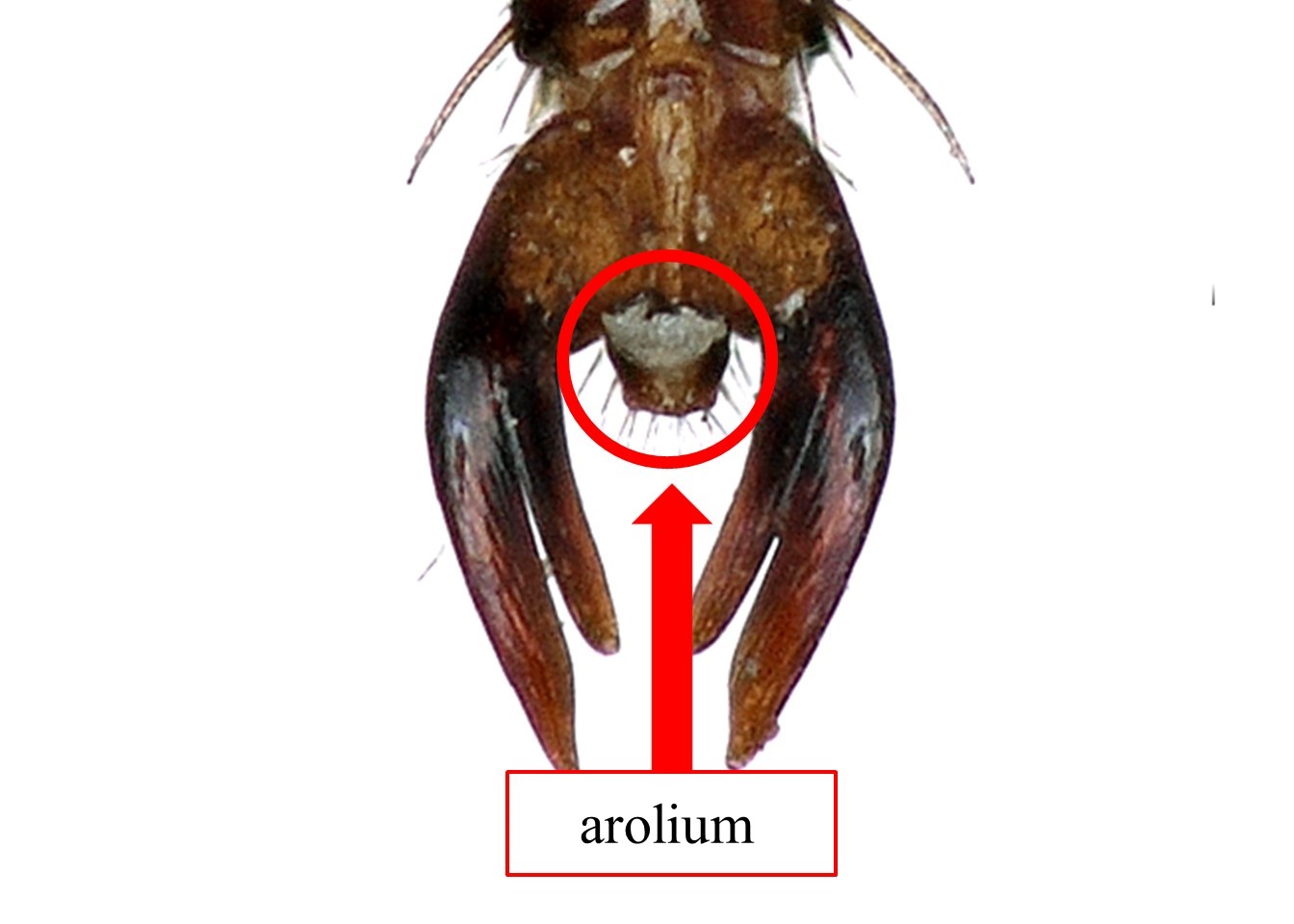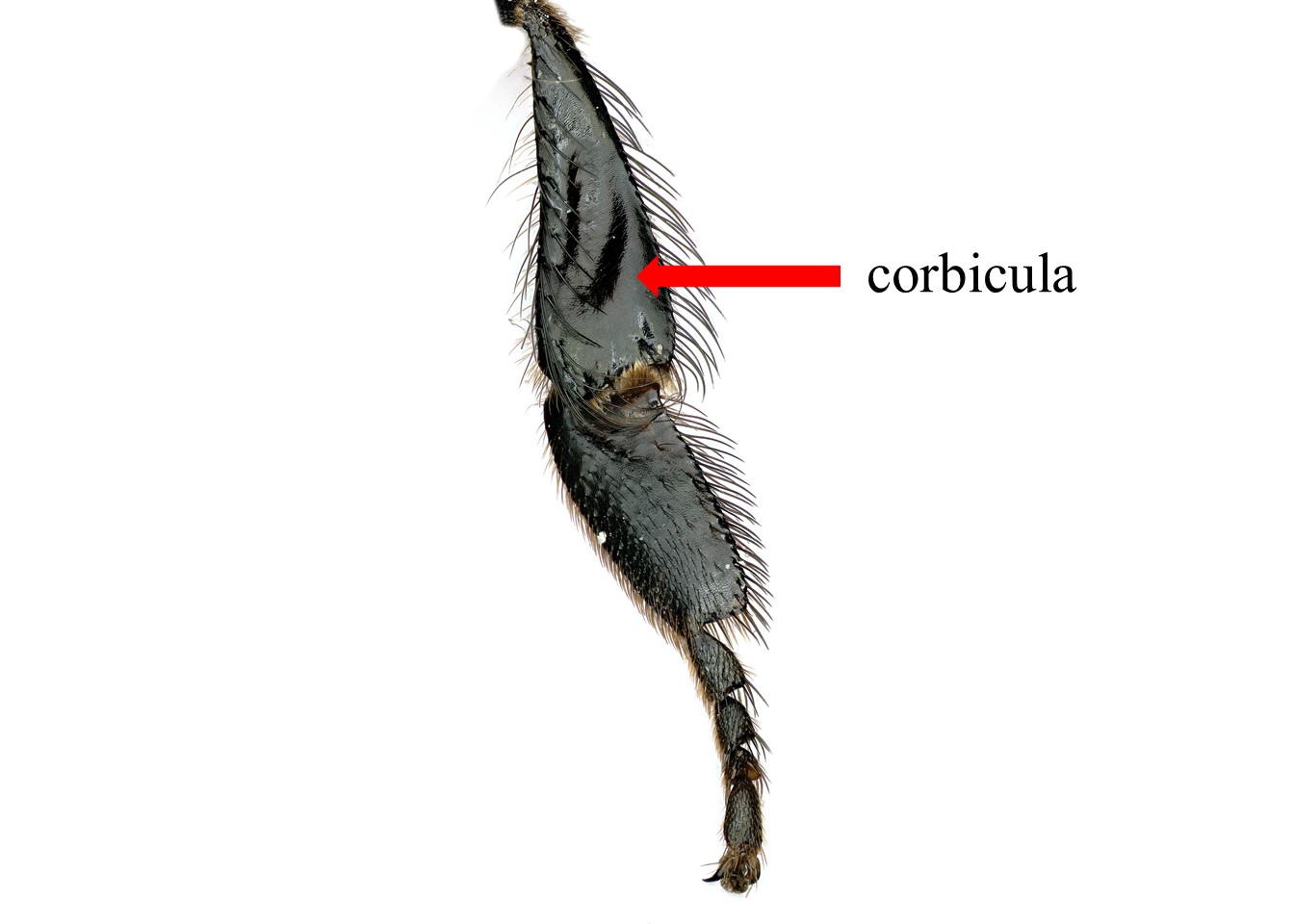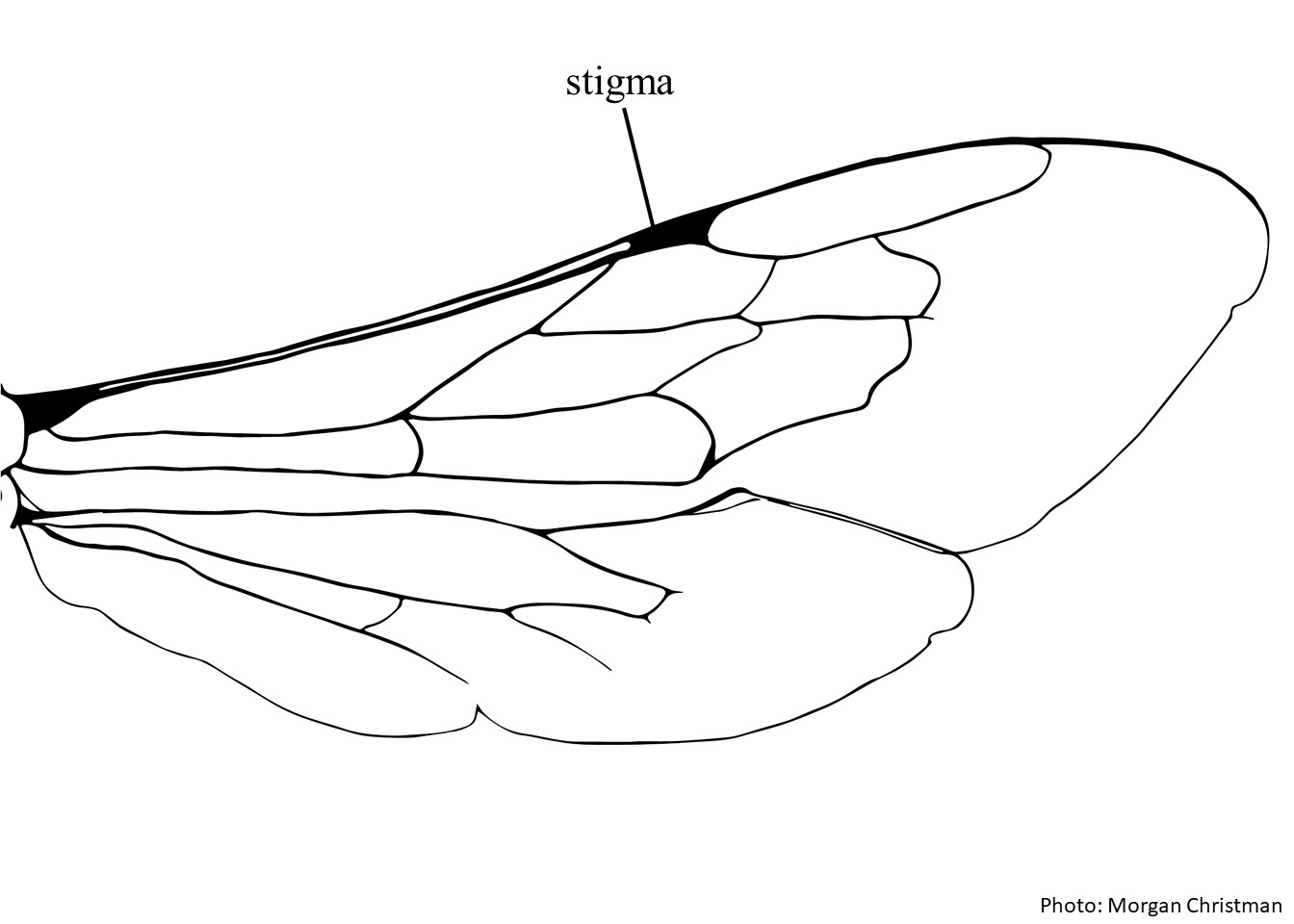Family: Apidae
Subfamily: Apinae
Tribe: Apini Latreille, 1802
Genus: Apis Linnaeus, 1758
Subgenera: Apis, Megapis, Micrapis
Common name: honey bees
The genus Apis includes all the honey bees, and it is the only genus of the tribe Apini. The tribe Apini, along with the tribes Bombini (bumble bees), Euglossini (orchid bees), and Meliponini (stingless bees), constitute a monophyleticmonophyletic:
a group of organisms having descended from the same common ancestor
group known as the corbiculatecorbiculate:
applies to all the bees that have corbicula (and which are part of a natural group within bees in the subfamily Apinae)
bees. Bees in the genus Apis can range in size from small (7 mm long) to large (19 mm long), are moderately hairy, and rather elongate. The eyes are hairy (Fig 1). The mandibles of workers lack teeth and carinae (Fig 2). The legs have claws (that are cleft) and aroliaarolia:
the cushion-like pad between the tarsal claws found at the ends of some bees' legs
 (Fig 3); the hind legs of the workers are modified into a corbiculacorbicula:
(Fig 3); the hind legs of the workers are modified into a corbiculacorbicula:
concave, smooth space, edged by a fringe of hairs arising from the margins of the hind tibia in bees, literally "basket" in Latin; its function is to hold the collected pollen in place
 for the transport of pollen and resins (Fig 4). Wings have complete venationvenation:
for the transport of pollen and resins (Fig 4). Wings have complete venationvenation:
the arrangement of veins in wings
, and the marginal cellmarginal cell:
a wing cell located on the edge (margin) of the wing of the forewing is nearly four times as long as the distance from its apexapex:
end of any structure
to the wing tip (Fig 5). Both jugal and vannal incisions of the hind wing are shallow (Fig 6) (Michener 2007Michener 2007:
Michener, C.D. 2007. The Bees of the World (2nd ed.). Johns Hopkins University Press, Baltimore and London, 953 pp.).
 is small and slender; prestigmaprestigma:
is small and slender; prestigmaprestigma: .
..jpg) delimited by a shallow notch.
delimited by a shallow notch. present in all legs.
present in all legs. on posterior tibiatibia:
on posterior tibiatibia:On occasion (mostly in the Neotropics), honey bees may be confused with other corbiculatecorbiculate:
applies to all the bees that have corbicula (and which are part of a natural group within bees in the subfamily Apinae)
bees in the tribe Meliponini (also known as stingless bees), in particular in the genera Melipona or Cephalotrigona, which are similar in size and may have color patterns resembling Apis.
Honey bees are generalist visitors of flowers and pollinate a large number of plants, many of which have commercial value. The western honey bee (Apis mellifera), and to some extent the Asian honey bee (Apis cerana), have been used extensively for commercial pollination of crops and other plants; the value of these pollination services is in the billions of dollars annually.
Nests of honey bees can be exposed or found in cavities of trees or rock formations. Some honey bee species are more flexible and nest in empty containers or human-made structures.
Honey bees had a much higher diversity and a broader distribution in recent geological times than the present. Honey bees’ origins point to South and Southeast Asia, as all the extant species of Apis, except for Apis mellifera, are native to that region. There is still contention about the number of species of honey bees due to the different species concepts used (in the past, most bee researchers have used the biological species concept). Herein, we consider the genus Apis as composed of nine extant species, as it has been proposed by Takahashi (2005) and Radloff, et al. (2011).
There are several species in the genus that are considered invasive. For example, Apis cerana (Asian honey bee) has invaded parts of Australia, Apis florea (dwarf honey bee) has invaded parts of the Middle East and northern Africa, and Apis mellifera (western honey bee) has been recently introduced in Asia and has colonized the rest of the world with the help of humans.
Extant species of honey bees are native to the Old WorldOld World:
the part of the world that was known before the discovery of the Americas, comprised of Europe, Asia, and Africa; the Eastern Hemisphere
. All species of Apis are found in Asia, although some of the species in this region have distributions restricted to islands in the southeast of the continent or at higher elevations in the Himalayas (Apis laboriosa). Only two Apis species are known to occur outside of Asia. Apis florea can be found in Africa, and Apis mellifera is known from all continents.
Distribution map generated by Discover Life -- click on map for details, credits and terms of use.